Hongyadong
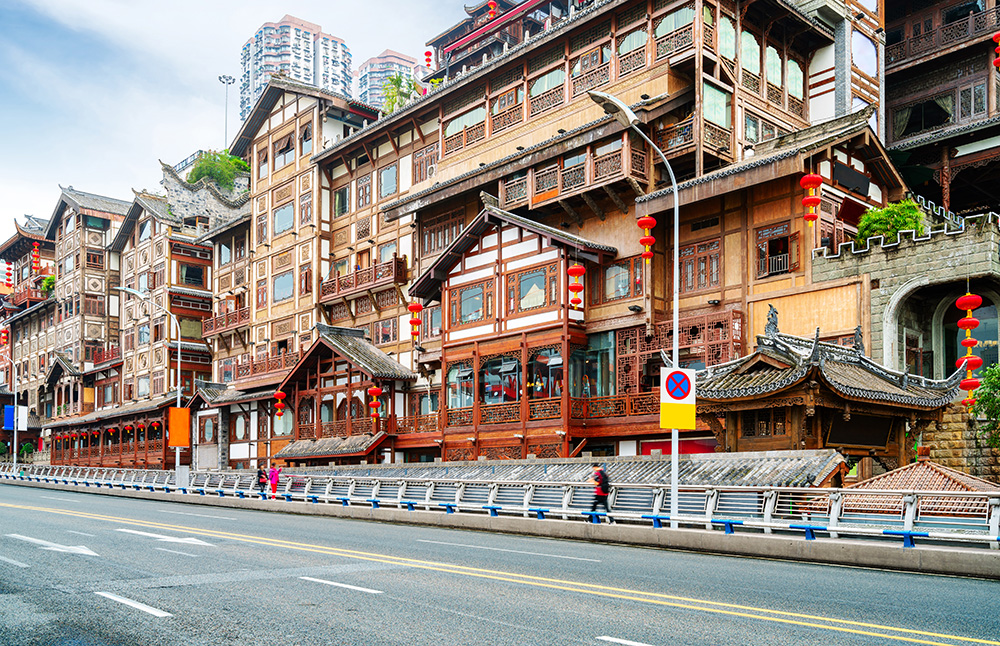
Hongyadong, formerly known as Hongyamen, is one of the ancient city gates of Chongqing. Whether you tohoping to see sights, go on a tour, leisurely explore or have a relaxing vacation, this is the perfect place. With its traditional architecture and Bayu cultural folk features, it has been rated a national AAAA level tourist attraction. In 2006, the municipal people’s government invested a total of 385 million yuan into this area. Hongyadong’s main scenic spots include the stilt buildings and the streets lined with antiques businesses. With a total area of 46,000 square meters, it is a key tourist landmark project in Chongqing. Hongyadong organically integrates six business forms: catering, entertainment, leisure, health care, hospitality, and cultural commerce, forming a unique vertical, three-dimensional, pedestrian street. It is becoming an increasingly high-level and quality tourist area.
Hongyadong is divided into four main streets: Zhiyanhe Bar Street, Tiancheng Lane Bayu Style Street, Feast Food Street and Exotic Style City Balcony. Each of the four streets have a distinct style. World-famous bars such as the American chain, Pirate Bar, have set up store here. The Tiancheng Lane Bayu Style Street sets a new fashion trend for the world by taking influence from the magnificent Bayu culture, dating back 2300 years ago. Typical dwellings with green bricks, stone tiles, red eaves, and green tiles that were popular at that time can be seen brought back to life. The Feast Food Street, food from all over the world is available.
The stilt buildings on the face of the cliff bring back the memories of old Chongqing, and recreate Spirited Away in real life. In recent years, the Hongyadong Folk Customs Area has become an increasingly popular destination for tourists because of its unique folk architecture, its evening lights, and its historical cultural heritage. It is an important landmark of Chongqing, and had more than 17 million visitors in 2019.
Location: No. 88 Jiabin Road, Yuzhong District (Chaotianmen Street)
Open 24 hours
Chongqing Yangtze River Ropeway
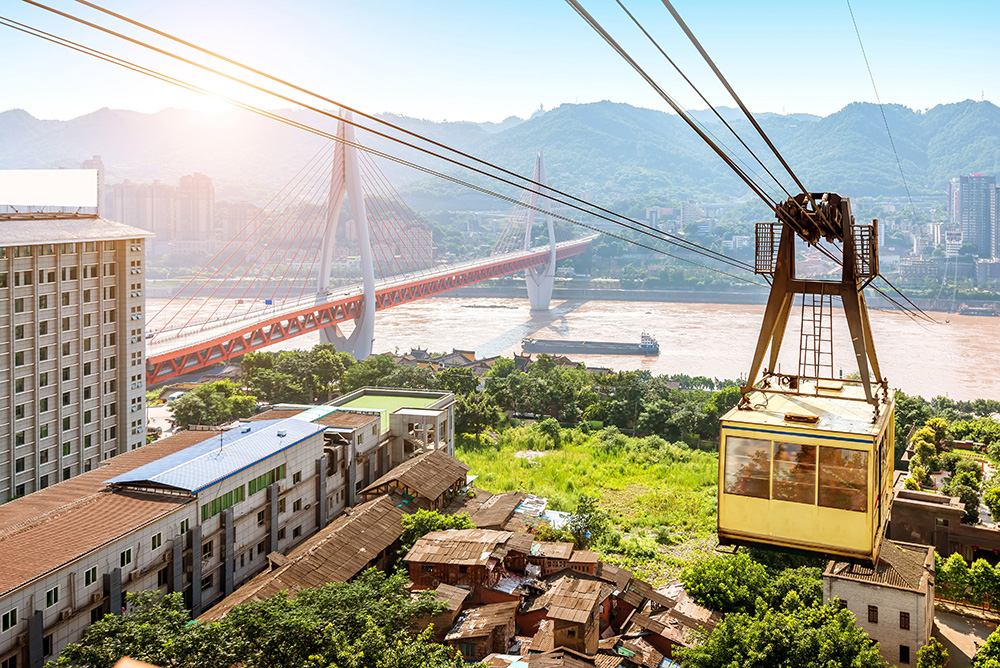
Construction on the Chongqing Yangtze River Ropeway started on March 20, 1986 and it was put into operation on October 24, 1987. It was the first large-scale river-crossing passenger ropeway on the Yangtze River designed and manufactured by China. It has the reputation as being the first “in the air corridor” over the Yangtze River. The cableway connects the prosperous Yuzhong district with the Nanan district of Shanshui city. It plays an important part in the formation of the traffic network of Chongqing. It reflects the unity between Chongqing’s citizens and its mountains and rivers, and truly complementing the landscape of this mountainous city.
Chongqing Yangtze River Ropeway Scenic Spot is now a national AAA level scenic spot. It is the sole urban aerial tourism scenic spot in China. The scenic spot spans the north and south banks of the Yangtze River and is composed of three parts: the north bank is the Cultural Exhibition Area, the south bank is the Film and Television Cultural Exhibition Area, and the Ropeway is the aerial sightseeing area. The ropeway tourism project promotes the Chongqing City Aerial Tour and the Chongqing City Night View Aerial Tour.
It is difficult to truly appreciate the charm of Chongqing without taking the cableway across the Yangtze River to properly understand this mountain city. Taking the Yangtze River ropeway from north to south, riding against the wind, you will see the constant flow of the Yangtze River, with its ends covered by the overlapping scenery of Nanshan mountain. Before you, there will be the Chongqing Bund and the bridge across the river. With this, you’ll form a magnificent three-dimensional picture of Chongqing. If you go from the south to the north, going across the sky, you will see a lonely city surrounded by precipitous mountains. The buildings are in the city, and the city is in the mountains, and the mountains are in the water. The city, the mountains, and the river, a perfectly integrated image of Chongqing City, will be in front of you.
For more information, click here
Location: No. 151 Xinhua Road, Yuzhong District, Chongqing
Opening times:
1st Mar to 31st Oct, 7:30 am – 10:30 pm
1st Nov to end of Feb, 7:30 am – 9:30 pm
Close at 10:30 pm on National holidays
Chongqing World Financial Center (CWFC)
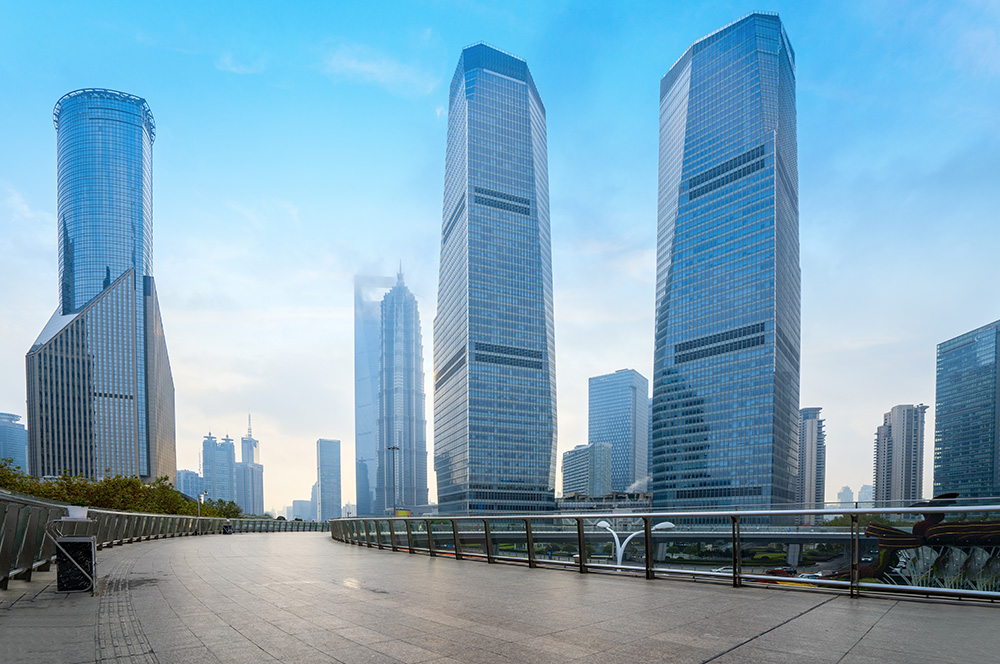
Located in the central business district of Jiefangbei, Chongqing, China, the 78-story Chongqing World Financial Center (CWFC), has a total investment of more than 3 billion yuan, and its construction started in 2010. It was the tallest building in Chongqing and the western region of China at the time. The total area of the project is about 5,800 square meters, and the total floor area is about 204,400 square meters, with a total height of 339 meters.
The outer wall of Chongqing World Financial Center is primarily composed of prominent vertical lines which change our perspective of its proportions. It is only at the four corners where the vertical lines are not to be seen. By doing this, the octagonal shape of the crown of the building is accentuart as our visual focus is drawn to focus on that top shape. After the corners sink in towards the middle, the top shape continues to converge inward and upward to the geometric center, before finally transforing into the shape of a star at the top. Through these layers of compression, the sense of oppression by a huge building is weakened. At the same time, the multi-fold design at the top of the tower and the application of highly reflective glass material reflects the sunlight in different directions. In the foggy environment of Chongqing, Chongqing World Financial Center shines like a bright crown on the Yuzhong Peninsula. It becomes the focus for miles around and makes people pay attention to this new landmark wherever they are.
Chongqing World Financial Center has three major areas: the WFC Mall, the British Royal Family’s private custom hotel, and international Grade A office areas.
Huixian Viewing Platform is located on the 73rd and 74th floors of Chongqing World Financial Center, where you can see the intersection of the two rivers and get a panoramic view of the mountain city. Enjoy the visual feast and admire the unique geographical wonders of the mountain city. Continue to pursue the cultural artefacts of Chongqing.
For more information, click here (Chinese)
Location: No. 188, Minzu Road, Yuzhong District, Chongqing
Opening times: 11 am – 6 pm
Huixian Viewing Platform: 8:30 am – 10 pm
Chongqing International Expo Center
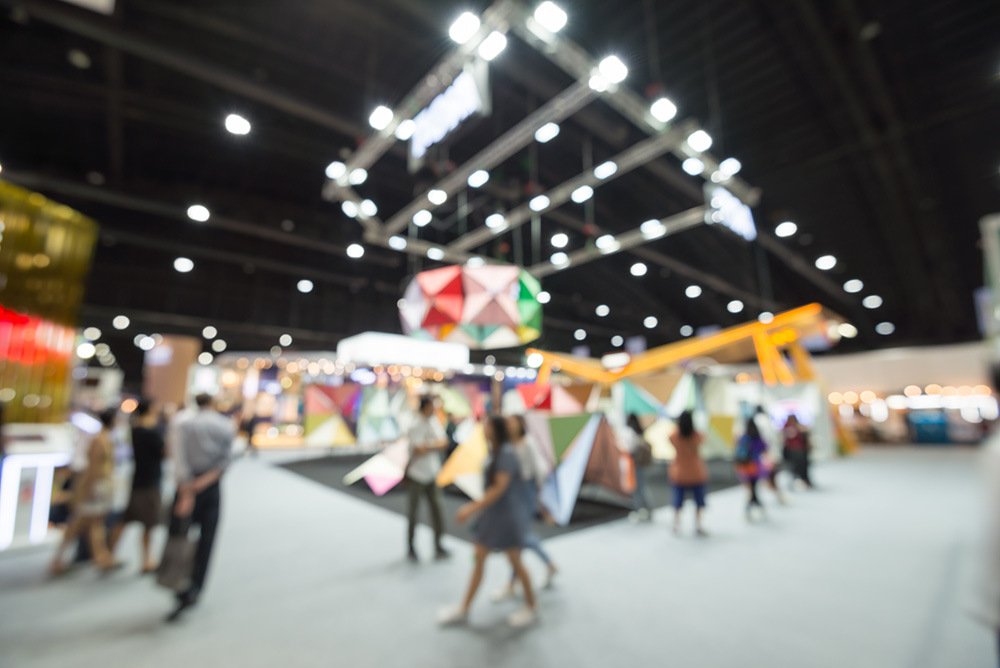
Chongqing International Expo Center is a smart and modern venue with many functions. Exhibitions, conferences, catering, accommodation, performing arts can all be found here. It is the largest professional venue in the west of China. Located on the banks of Jialing River, it is surrounded by mountains, rivers, parks, and ancient towns. The natural landscape blends in with the Expo Center, and makes it a unique exhibition hall for parks, culture, and ecology in China.
Chongqing International Expo Center has an indoor exhibition area of 200,000 square meters, with a total of 16 full-floor column-free exhibition halls, and a single exhibition hall of 11,500 square meters. It can bear 3-5 tons per square meter, so that means heavy equipment can directly access the halls. Besides, there is also an outdoor exhibition area of 100,000 square meters. The ground can bear 5 tons per square meter, making it entirely suitable for holding large-scale competitions and exhibitions. There are a total of 11,000 parking spots in the north and south areas, complete with facilities. Chongqing International Expo Center is the only indoor, professional venue, in the southwest of China than can hold 10,000 people. With world-class lighting and sound equipment, it is suitable for all sorts of table arrangements and seating plans, while maintaining a comfy environment. Different large-scale outdoor events like concerts, sporting events, new car launches and forums would find this the perfect place to do so.
Chongqing International Expo Center like a giant butterfly from above, symbolizing the change and take-off of Chongqing’s exhibition economy. Adhering to the purpose of creating value for customers through service and the promoting of prosperity and development of the exhibition industry in western China, Chongqing International Expo Center is committed to building a more popular and green digital venue in China. It also hopes to provide an international professional platform for exhibitions and events from all over the world.
For more information, click here (Chinese)
Location: No. 66, Yuelai Avenue, Yubei District, Chongqing
Opening times: Depending on the time at the exhibition
Baidi Fortress
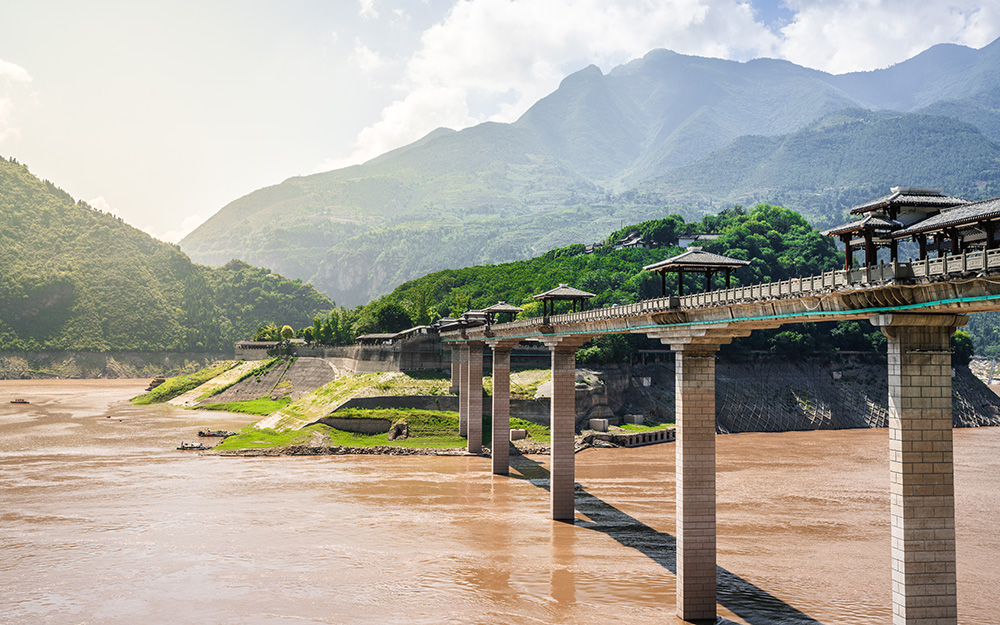
Baidi Fortress has been mentioned many times in literature and in history. According to some legends, it was given its current name during the late Western Han dynasty, when Gongsun Shu built a city here. He declared himself Bai Di (White Emperor). During the Three Kingdoms period, Liu Bei was famous for leaving family and state affairs to Zhuge Liang, the prime minister, after his army defeated the Kingdom of Wu. He retreated to Baidi towards the end of his life. Furthermore, Li Bai’s poem, “At dawn we leave the walled city of the White Emperor, towering among the multi-colored clouds; and came downstream one thousand li to Jiangling in a day”, also brought fame to Baidi Fortress. Li Bai, Du Fu, Bai Juyi, Liu Yuxi, Su Shi, Huang Tingjian, Fan Chengda, and Lu You are just a few of the famous poets who have ventured to the Baidi Fortress, traveled to Kuimen, and wrote poems about these beautiful places. With the spectacular scenery, long history, profound culture, and rich cultural heritage, the protection, usage, and development of Baidi Fortress are particularly important.
The present Baidi Fortress scenic area is located ten miles east of Fengjie County, Chongqing City. It is on Baidi Mountain, and is actually part of a group of temple buildings.
The Baidi Temple is well preserved, with not only the Ming Liang Hall, Wu Hou Temple, Star Pavilion and other buildings of the Ming and Qing dynasties amazing intact, but it has also retained the architectural pattern of the Baidi Temple of the Ming and Qing dynasties. In 2006, Baidi City was listed in the sixth batch of Major Historical and Cultural Sites Protected at the National Level.
Baidi Fortress’s main building Ming Liang Hall is solemn and majestic, and has fantastic statues of Liu Bei, Guan Yu, Zhang Fei, Zhuge Liang and many others. To the west of Wu Hou Temple, there are the statues of Zhuge Liang, Zhuge Zhan, Zhuge Shang: three generations from grandfather to grandson. The new clay sculpture of “Liu Bei Entrusting His Child at his Death” and the large porcelain painting of “Du Fu Humming” have added further cultural significance to Baidi Fortress. In the painting and calligraphy room, we find Zhou Enlai’s 1958 calligraphy piece, “Zao Fa Bai Di Cheng” (a rewriting of Liu Bai’s poem), and other calligraphy works by modern masters. Hundreds of local cultural relics have been unearthed in the heritage room. In the stele room on the east and west sides of Ming Liang Hall, there are more than 70 paintings and calligraphy steles on display.
Location: No. 1, Baidi Village, Baidi Town, Fengjie County, Chongqing
Opening times: 6:30 am – 6 pm